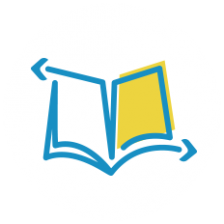Adaptations, accommodations, and modifications may seem like interchangeable terms, but when it comes to inclusion they carry significantly different meanings. Accommodations and modifications serve as two separate kinds of curricular adaptations. The State of Washington’s Office of Superintendent of Public Instruction notes that while the Individuals with Disabilities Education Act (IDEA) does not specifically define accommodations and modifications, a general understanding of these terms exists.
Accepted Understandings
Before delving into the differences between accommodations and modifications, let’s take a step back and focus on the concept of curricular adaptations. The California Positive Behavior Initiative Positive Environments, Networks of Trainers (PENT) defines curricular adaptations as “changes permissible in educational environments which allow the student equal opportunity to obtain access, results, benefits, and levels of achievement.” Simply put, curricular adaptations allow students with disabilities to participate in inclusive environments by compensating for learners’ weaknesses.
Accommodations accomplish this objective without modifying the curriculum. As PENT explains, “Some curricular adaptations do not fundamentally alter or lower standards or expectations in either the instructional or assessment phases of a course of study and can be designated as ‘accommodations’.” In other words, students receiving accommodations read the same material and take the same tests as their peers without disabilities.
In contrast, modifications refer to curricular adaptations which change or lower expectations or standards. For instance, say an English course requires reading “The Adventures of Tom Sawyer.” Students who struggle with reading could instead read the simplified version published by Great Illustrated Classics. This allows for participation in classroom discussions but lowers reading level expectations.
Identifying Appropriate Curricular Adaptations
Teachers, does reading the above cause you a little anxiety? After all, how do you know which students need what curricular adaptations? If so, rest easy! Individualized education plans (IEP) list what accommodations or modifications a child should receive. Every student with documented special needs goes through the IEP process. (For a comprehensive look into the IEP process, see The IEP Process Explained.)
Parents, the IEP process offers you an ideal opportunity to voice your opinion regarding what you deem to be appropriate accommodations and modifications for your child. As noted in The Collaborative IEP: How Parents and Teachers Can Work Together, you play a vital role! Seek wisdom from the special education professionals on your kid’s IEP team to pinpoint which adaptations could help your child excel academically. Go beyond this team as well: ask your doctor, outside therapists and any other relevant professionals for suggestions prior to the IEP meeting.
Application Inside the Classroom
Once the IEP team successfully identifies the proper curricular adaptations for a student, the challenge becomes implementing them into the classroom. While many general education teachers view this process with trepidation, they aren’t alone in figuring out how to make these adaptations serve their students well. Special education teachers are there to help, and when general education teachers establish strong working relationships with them, the odds of student success increase.
For example, general education teachers can work with special education professionals to “front-load” a topic that may be difficult for students with disabilities; the special education teacher can pull aside the children who are likely to struggle and go over this topic with them before they encounter it in the general classroom. Once they’ve received this accommodation, these children are much more likely to grasp the concept at hand when it’s covered again in a general education setting.
Points to Consider: Dispelling Stigma and Opening Possibilities
In addition to the educational aspects of an inclusive classroom is a social element. Bullying can become an issue for students who receive curricular adaptations as bullies tend to target those who are different in some way. For instance, students who need accommodations or modifications might be called “stupid,” “dumb” or worse names.
Gretchen Walsh M.S. Ed., an education professional who works with students with special needs as director of the Academic Support Center at Notre Dame College, tries to eliminate any negative stigma connected to curricular adaptations. In an interview, she told Special Education Guide, “I want our students to understand that these pieces of software or adaptative equipment aren’t relegated to the world of learning differences or disabilities. These pieces of software are used mainstream. Professionals all use them because of the time-saving factor involved with them.” She cites the software program Dragon Dictate as an example. Doctors, nurses and lawyers are among the professionals who use this speech-to-text technology, a popular software program in the special education realm.
Finally, curricular adaptations lead to new educational possibilities. This rings true especially for students who receive accommodations as IDEA mandates that colleges must also provide accommodations for individuals with special education needs. Therefore, higher education is a realistic pursuit for many students.






